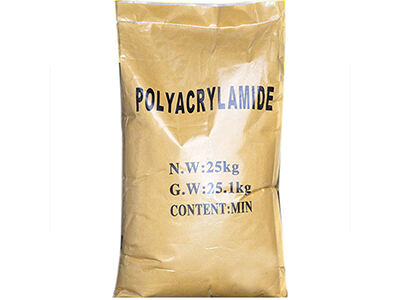When it comes to the problematic sphere of industrial wastewater treatment, the choice of flocculants is one of the factors of efficiency and effectiveness of the processing. Among the available options, anionic polyacrylamide (APAM) has become the ideal candidate, due to its impressive results in separating suspended solids and wastewater. Its functionality in different capacities of operation and water characteristics has endowed it to be unavoidable in industries. This paper will explore the factors which have contributed to the continued topicality of anionic polyacrylamide, especially in terms of influencing the molecular weight and optimization of solubility.
Molecular Weight Impact on Anionic Polyacrylamide’s Flocculation Efficiency
Molecular weight is one of the most influential factors that influence the effectiveness of anionic polyacrylamide in the treatment of wastewater. The length of the chains of APAM is determined by its molecular weight and hence its ability to bridge which is a critical process in flocculation. Higher molecular weight polymers have long polymer chains, hence offer a long network to bridge between suspended particulate matter in the wastewater. The ability increases the development of large and stable flocs which are easily removable or filtered off the water.
On the other hand, a reduced molecular weight of APAM means longer chains are shorter and this may not be effective when the inter-particulate bridging strength is required. Nevertheless, even low molecular weight forms may still find their use in processes where less concentration of suspended solids is required or faster sedimentation is required.
The industries where wastewater comprises of varied particulate properties, like mining and mineral processing usually favor high molecular weight APAM as it is better in aggregating fine particles. In the meantime, treatment plants with comparatively steady waste profiles may be satisfied with lower molecular weight polymers which will be cheaper.
Through consideration of the right molecular weight depending on the nature of wastewater, industries can maximize the flocculation process, which minimizes the usage of chemicals without sacrificing or even improving the treatment process.
How Powdered Polyacrylamide Optimizes Solubility in High-Turbidity Water Systems
High turbidity in the industrial environment necessitates the maximization of the solubility of flocculants so that the distribution of the flocculants among the wastewater is maximized and uniform. Anionic polyacrylamide comes in various forms, the powdered form of which is especially beneficial to high-turbidity systems.
The solubility of powdered polyacryl amide is higher than these liquids. Their fine particulate nature also enables quick dispersion when in contact with water that enhances a rapid hydrolysis reaction that enables the solubility. The distribution of the flocculant can be done in a more uniform manner and within a limited period of time where the entire water body can be treated hence can allow effective flocculation of water even in difficult situations.
The large surface area to volume ratio of the powdered form increases the speed of the dissolution process and this is of great importance in the rushed industrial processes where time is of the essence. These properties enable the powdered APAM to be useful in a variety of situations, such as sediment-contaminated agricultural runoff to emulsified oils in refinery effluents.
Also, powdered APAM allows firms to more accurately control dosing levels and reduce waste and improve cost-effectiveness. This flexibility causes powdered APAM to be a useful instrument in the tool kit of wastewater management experts.
 EN
EN
 AR
AR BG
BG HR
HR NL
NL FI
FI FR
FR DE
DE IT
IT KO
KO NO
NO PL
PL PT
PT RU
RU ES
ES SV
SV TL
TL ID
ID LV
LV SL
SL UK
UK VI
VI SQ
SQ HU
HU MT
MT TH
TH TR
TR FA
FA MS
MS BE
BE HY
HY AZ
AZ KA
KA BN
BN CEB
CEB






